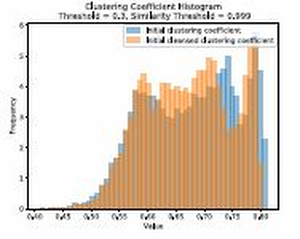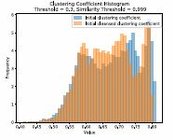Information
- Publication Type: Master Thesis
- Workgroup(s)/Project(s):
- Date: January 2019
- Date (Start): 10. January 2018
- Date (End): 29. January 2019
- TU Wien Library:
- Open Access: yes
- First Supervisor: Eduard Gröller
Abstract
Understanding the organization principle of the brain and its function is a continuing quest in neuroscience and psychiatry. Thus, understanding how the brain works, how it is functionally, structurally correlated as well as how the genes are expressed within the brain is one of the most important aims in neuroscience. The Biomedical Image Analysis Group at VRVis developed with the Wulf Haubensak Group at the Institute of Molecular Medicine an interactive framework that allows the real time exploration of large brain connectivity networks on multiple scales. The networks, represented as connectivity matrices, can be up to hundreds of gigabytes, and are too large to hold in current machines’ memory. Moreover, these connectivity matrices are redundant and noisy. A cleansing step to threshold noisy connections and group together similar rows and columns can decrease the required size and thus ease the computations in order to mine the matrices. However, the choice of a good threshold and similarity value is not a trivial task. This document presents a visual guided cleansing tool. The sampling is based on random sampling within the anatomical brain hierarchies on a user-defined global hierarchical level and sampling size ratio. This tool will be a step in the connectivity matrices preprocessing pipeline.Additional Files and Images
Weblinks
BibTeX
@mastersthesis{gutekunst_2019,
title = "Guided Data Cleansing of Large Connectivity Matrices",
author = "Florence Gutekunst",
year = "2019",
abstract = "Understanding the organization principle of the brain and
its function is a continuing quest in neuroscience and
psychiatry. Thus, understanding how the brain works, how it
is functionally, structurally correlated as well as how the
genes are expressed within the brain is one of the most
important aims in neuroscience. The Biomedical Image
Analysis Group at VRVis developed with the Wulf Haubensak
Group at the Institute of Molecular Medicine an interactive
framework that allows the real time exploration of large
brain connectivity networks on multiple scales. The
networks, represented as connectivity matrices, can be up to
hundreds of gigabytes, and are too large to hold in current
machines’ memory. Moreover, these connectivity matrices
are redundant and noisy. A cleansing step to threshold noisy
connections and group together similar rows and columns can
decrease the required size and thus ease the computations in
order to mine the matrices. However, the choice of a good
threshold and similarity value is not a trivial task. This
document presents a visual guided cleansing tool. The
sampling is based on random sampling within the anatomical
brain hierarchies on a user-defined global hierarchical
level and sampling size ratio. This tool will be a step in
the connectivity matrices preprocessing pipeline. ",
month = jan,
address = "Favoritenstrasse 9-11/E193-02, A-1040 Vienna, Austria",
school = "Research Unit of Computer Graphics, Institute of Visual
Computing and Human-Centered Technology, Faculty of
Informatics, TU Wien",
URL = "https://www.cg.tuwien.ac.at/research/publications/2019/gutekunst_2019/",
}

 image
image Master thesis
Master thesis Poster
Poster


